
Mado Monogatari: Fia and the Wondrous Academy Review
Dungeon crawlers have always been a bit of a sticky spot for me. My dungeon crawling preferences range from Persona 3 to Legend of Grimrock, so I like to think I've got a bit of variety in my tastes. It's hard to pinpoint what makes a dungeon crawler fun, whether it's game feel, or dungeon structure, or combat design. Thankfully, Mado Monogatari: Fia and the Wondrous Academy does feel somewhat good to explore and play in, but only to a point. Its shortcomings outweigh its strengths, and there are several shortcomings to get through, so let's dive into it.
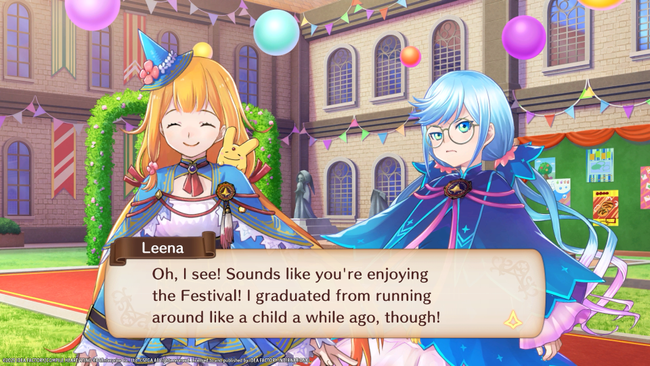
Mado Monogatari kicks off with an obnoxious type of comedy tone, which was unfortunately a brick wall for me that I had to push through for this review. I don't care for the comedy-of-errors type of humor this game throws at you from the jump, where Fia and her pet Carbuncle manage to ruin their Academy Entrance Ceremony via buffoonery of the highest caliber. To set the stage, picture a very serious Entrance Ceremony to an esteemed academy for spellcasters, and somehow going from that to this: one student breathing actual fire because she ingested spicy food, another student trying to slay the pet Carbuncle that has not offered any sort of aggression, and Fia (the main character) desperately trying to stop the chaos by flailing about like a headless chicken, all while her professors look on in abject horror.
Let me pause for a second — I'm not opposed to some silly comedy, I've enjoyed other comedic anime-styled games & shows, I generally try not to be a No Fun Allowed guy. That said, I really did not gel with the characters or the story for the first ten hours of the game. While I will admit that the writing and major character moments did eventually endear me to the cast, it took a long time to get to a point where I was tolerating their nonsense.
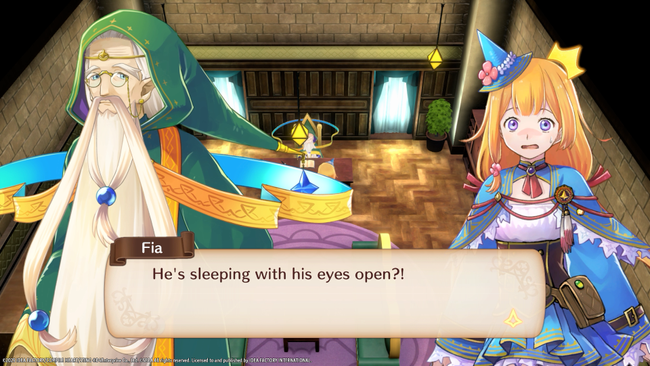
Your main characters are Fia, a normal girl trying to figure out what she wants to do in life, carrying with her a tome entrusted to her by her grandmother. This tome is sacred, and hints that Fia has a lot more power than she knows, but that mystery (and others like it) is often overshadowed by the slapstick dumbassery permeating the game's story. Joining Fia on her journey of self-discovery is Will (a guy who wishes to become a "hero" and continually tries to name his attacks something stupid like Burning Morning Strike), Leena (an extremely gifted and talented spellcaster who is socially awkward), Totto (an airheaded mercantile type who aligns with whatever gives him the most profit), and Eska (a dragon maiden who at first wishes to kill and eat Fia, but then becomes her stalker and wishes to be eaten by Fia.)
Your goal throughout most of the game is to rank up your Mage Rank by completing lessons, exploring dungeons, and turning in missions. The general gameplay loop works like this: talk to the teacher, complete a "lesson" (a tutorial, usually), upgrade your Grimoire, and then tackle the main story by entering the marked dungeon. The dungeons are all pretty rote and boring, but you actually don't spend a whole lot of time on each floor unless you're exploring every inch of the procedurally generated maps, busting each resource, and defeating each enemy. You explicitly do not want to do this when you unlock the second dungeon, in fact, as you will find yourself running out of Vitality — a resource that drains when you clear floors or break objects in the dungeon. When that hits zero, you start taking HP damage until you faint or eat curry.
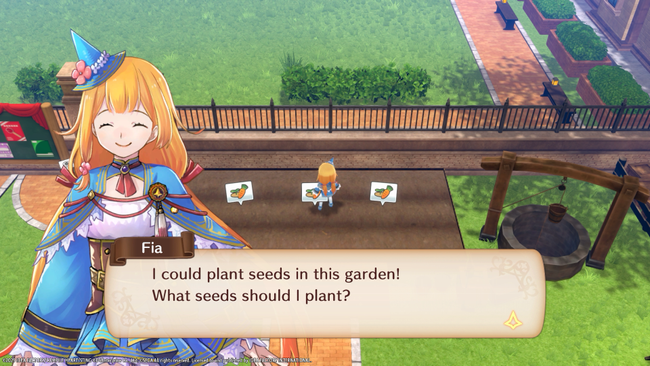
Many mechanics feel shoehorned in, now that I've mentioned curry. You can fish, cook, farm, fertilize a tree, and synthesize items, but doing so requires unlocking each specific node in your grimoire. The first few levels of each are mandatory, but after that, it's optional. The thing is, everything except the synthesis mechanic feels out of place. You don't need to farm or fertilize a tree or cook curry, the drops you find (or extras you can buy from the shops) are well more than enough. There are a variety of curry types, each with different benefits, so that provides at least a reason to cook. However, for the others ... once I completed the tutorial, I simply forgot they existed.
Combat in Fia and the Wondrous Academy is real-time. Each character has a position on a meter, and it advances unless you pause the game or use a normal attack. Characters need to aim their spells and attacks once their icon "completes" the meter. There is an auto-lock feature, but it made it hard to predict where enemies were going to go with certain narrow abilities, so I eventually turned this off. There is no dodge or parry (thank god, to be honest), but instead, the game leans on more traditional RPG options such as buff and debuff spells to mitigate or increase damage. The real thrust of the combat, however, lies in customizing your character with several different elemental spells in order to take advantage of the Great Magic mechanic.
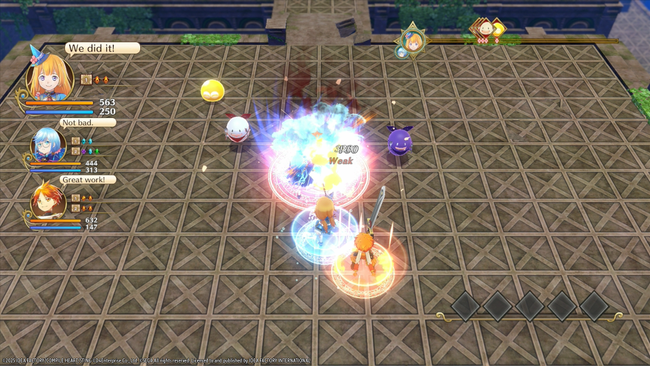
Every time you land a successful elemental spell, you generate a Great Magic mark. If you generate the correct marks, you can cast Great Magic, which is an unavoidable, time-stopping magical nuke that hits all enemies for the respective elemental damage. Furthermore, some abilities require combined marks, which can be generated either through using higher-tier magic spells or by casting two spells and combining the resulting mark. It's a pretty good system for what it is, and made combat a lot more interesting, but a good deal of the regular encounters are reduced down to mashing the Square button until the thing you're fighting dies.
You'll notice that the combat section is pretty short for this review, and that's because it's not that deep. You can assign different elemental spells or buffs and debuffs to your party as you see fit, but after ten hours of shooting Puyos in the face with arrows, I started to feel my brain going numb. There are a variety of enemies outside of Puyos, mind you, but it still seemed like I was fighting them well past the point you'd stop fighting basic tutorial enemies. Doesn't feel good killing the same enemy for well over 15 hours in your repetitive dungeon crawler, I gotta say.
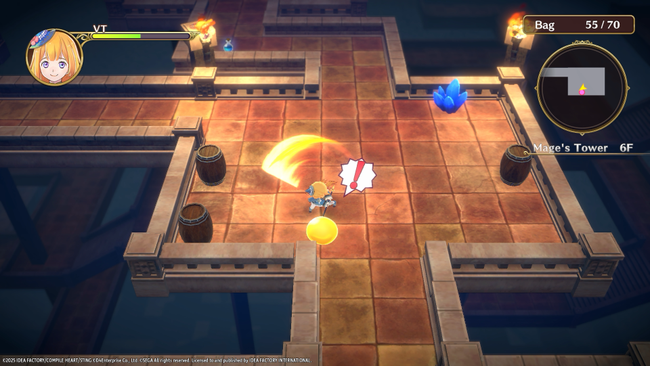
All in all, the game is serviceable for what it is, but the tone of the game throws me for a loop, and the dungeon-crawling aspects aren't that interesting to warrant bouncing back and forth from dungeon to school and back again for multiple sessions. While the game is retailing at $50, I still feel that this game is a little too expensive for what it offers. This feels like the perfect game to grab on sale, rather than rushing out to the store and getting it immediately on launch. That said, there's still enough here to satisfy people with a deep urge for dungeon crawling or anime slapstick, I suppose.